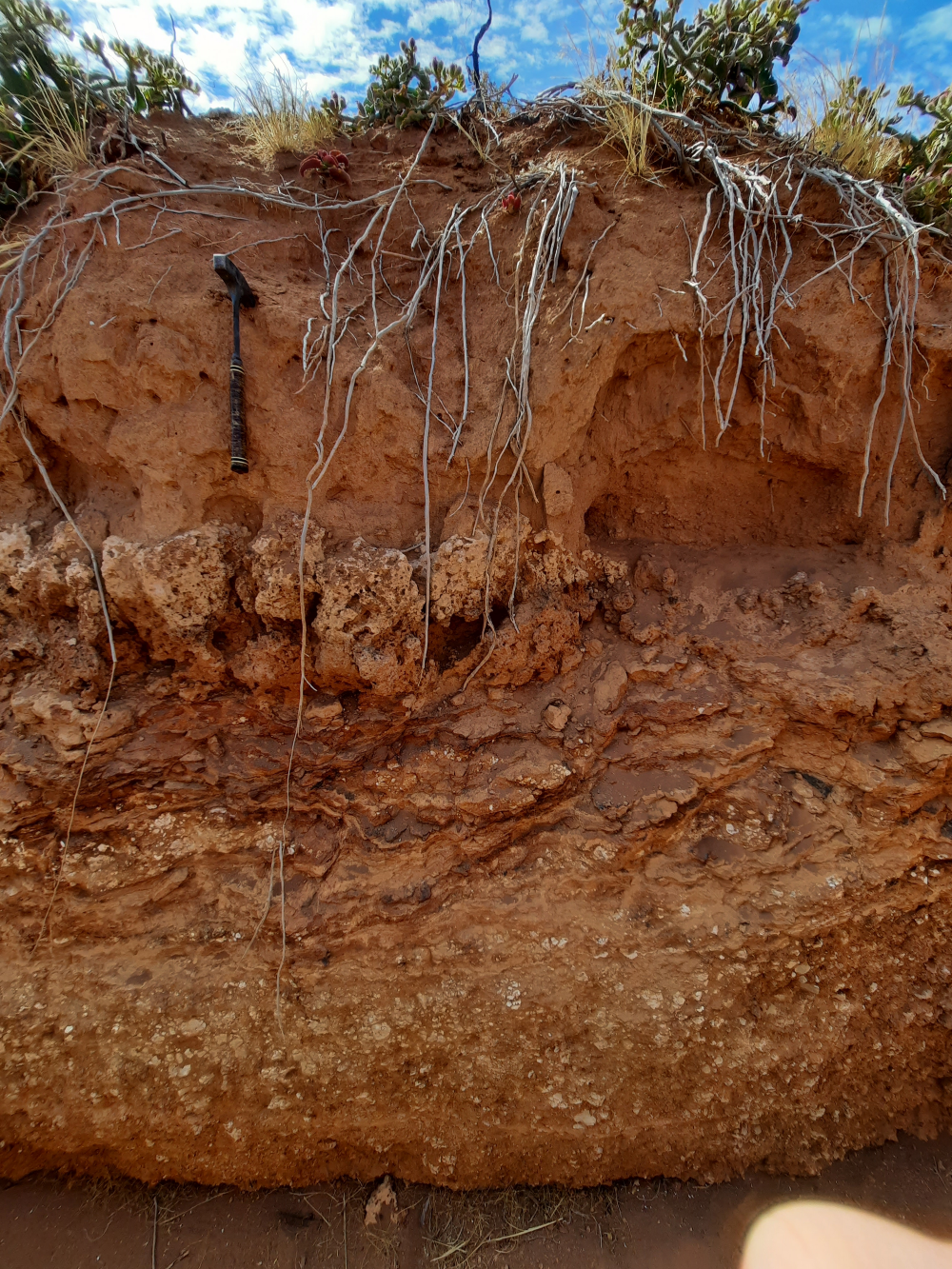The landscape in South Africa is pockmarked by beautiful smatterings of wild flowers. They grow in this particular way because they prefer setting up camp on termite mounds which are richer in nutrients than the surrounding soil, and also happen to be the oldest termite mounds in the world.
The termite mounds are known as “heuweltjies” in Afrikaans, meaning “little hills”, and are inhabited to this day by the southern harvester termite (Microhodotermes viator). They can be found along the Buffels River in Namaqualand, visible in spring thanks to the purple flowers that bloom on the surface of the nutrient-rich termite mounds.
“Recent radiocarbon dating has revealed that these mounds are far older than any previously known, with some dating as far back as 34,000 years,” said lead author on the study, Dr Michele Francis, a Senior Lecturer (Extraordinary), in the Department of Soil Science in the Faculty of AgriSciences at Stellenbosch University, in a statement.
“That’s older than the iconic cave paintings in Europe and even older than the Last Glacial Maximum, when vast ice sheets covered much of the Northern Hemisphere.”
The radiocarbon investigation revealed the organic carbon within the heuweltjies were as old as 13,000 to 19,000 years, while the carbonate went back a whopping 34,000 years. The previous record holder from Brazil was a measly 4,000 years, making the Buffels River mounds the oldest active termite mounds on the planet by a cool 30,000 years – at least, until we radiocarbon date some that are even older.
“To put it in perspective, these termite mounds were already ancient when woolly mammoths still roamed the Earth,” continued Francis. “During the Last Glacial Maximum, around 20,000 years ago, massive ice sheets covered parts of North America, Europe, and Asia. These mounds were already thousands of years old by then, providing a living archive of environmental conditions that shaped our world.”

“The discovery of these mounds is akin to being able to read an ancient manuscript that changes everything we thought we knew about history.”
Image credit: Teneille Nel
They inhabit a much less frosty environment today, but serve as a rare record of prehistoric climate conditions. By studying their composition, the team were able to establish that the region saw a lot more rainfall when they were forming, introducing minerals like calcite and gypsum into the groundwater as a natural carbon sequestration process.
Their creators may only be mini, but these ancient mounds hold a lot of potential in teaching us about the climate of the past, and how we can mitigate climate change in the future.
“The discovery of these mounds is akin to being able to read an ancient manuscript that changes everything we thought we knew about history,” said Francis. “Their age, and the insights they provide into ancient ecosystems, make them a candidate for global recognition as a natural wonder.”
“By studying these mounds, scientists can gain a better understanding of how to combat climate change, utilising nature’s own processes for carbon sequestration. They also highlight the importance of preserving our natural world, as these tiny engineers have been shaping our environment for tens of thousands of years.”
The study is published in Science of The Total Environment.
Source Link: The World’s Oldest Termite Mounds Are 34,000 Years Old, And They’re Beautiful